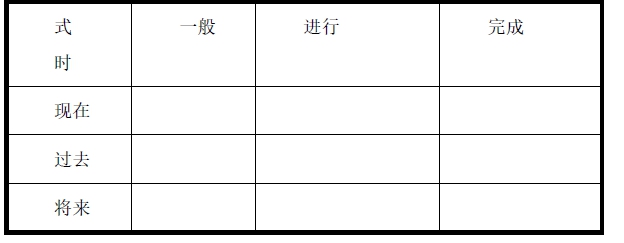[英语]高中英语被动语态教学课例研究
2017-09-22
一. 案例背景
高中英语课程标准(试验)》明确指出:“课改的重点就是要改变英语课程过分重视语法和词汇知识的讲解与传授、忽视对学生实际语言运用能力的培养的倾向,强调从学生的学习兴趣、生活经验和认识水平出发,倡导体验、实践、参与、合作与交流的学习方式和任务型的教学途径,发展学生的综合语言运用能力,使语言的学习过程成为学生形成积极的情感态度、主动思维和大胆实践的过程。”语言的学习是一个自主体验、实践的习得过程。语法的学习亦然,且习得的语法知识只有在反复应用中才能被学生消化、吸收。尤其当它与适当的语境结合或让学生用它去“做事”时,学生的体验会更加深刻,然后通过总结及归纳,使学生对所学语法更加明晰。这时,语法知识才会真正内化为学生的真实的能力。
本课例整体操作模式是按:“认识理解-情景操练-归纳总结-练习巩固-任务活用”的程序进行的。虽然授课班级学生的英语实际水平差强人意,但临近结束时,学生们已从开始时的沉闷、拘谨、懵懂变得积极、清晰而且流畅。授课取得了良好的效果。
二、相关理论
行为主义心理学把语言看成是一种行为,是一系列的刺激和反应:S1——R1...S2——R2。S1:实际刺激(stimuli),R1:语言替代性反应(response),S2:语言替代性刺激,R2:实际反应。其中,S1就相当于我们语言教学中创设的真实情境,S2则是通过语言表达功能给学习合作者传递的虚拟情境,学习者(包括合作者)接受这两种情境的刺激,完成语言习得的全过程,即R1、R2所表示的两种反应。
认知理论反对把知识当作“一个整体的、自足的,从理论上讲与学习和使用它的情境相脱离的东西”。因为这样的知识正如著名的数学家、逻辑学家怀特海(White—head,A.N.)指出的,是“呆滞的知识——仅为人脑所接受却不加以利用,或不进行检验,或没有与其他新颖的思想融为一体,因而,当需要用这些知识来解决实际问题时,它们往往被证明是没有用的。也就是说,情境认知理论超越了传统的知识观,强调知识的情境性、真实性、社会性、应用性、互动性。
三.教学过程及分析
Step1. Lead-in
(1)Let ss read the following discovery about my countryside and think of the tense and the voice in the underlined part on the screen.
Discovery
Over the past ten years, a great many changes have taken place in my hometown. A new park has been built for villagers to do exercises. The muddy roads has been repaired and a lot of flowers have been planted on both sides of the roads. some new factories have been set up . Many old houses have been torn down and a lot of new buildings have been built. In a word, the village has become tidy and clean.
(2)Let ss summarize the structure of the present perfect passive voice.
分析:直接采用本单元的话题来引入主题,学生感到熟悉。自然地呈现了语法结构。根据划线部分的提示,学生能轻松地归纳出现在完成时的被动语态的结构。
Step2. Practice 1 present perfect passive voice.
(1)Although our hometown has become more beautiful, our environment has been damaged badly. Look at the pictures on the screen and fill in the blanks using the given words
Mary: Peter, look at these pictures. What has been done?
Peter: Oh, my god. ___________________① trees/ cut down / villagers.
Mary: Peter, look at these pictures. What has been done?
Peter: Oh, my god. ___________________② rivers/ pollute / factories.
Mary: Peter, look at these pictures. What has been done?
Peter: Oh, my god. ___________________③ wild animals/ kill / people
(2) Translate the following sentence into English.
人类已经为自己的行为而受到了惩罚.
分析:这一步来源于本单元“Reading”部分,教师利用这部分创设了一个语境:Mary和 Peter就屏幕上图片的内容进行对话。在这个语境中,按对话的形式操练了语法结构,这让学生感到新鲜,同时也对屏幕上图片所呈现的环境遭受破坏的景象感到震惊,随着自然灾害的发生,人类也为自己的行为付出了代价,此环节最后的句子翻译起到了总结概括的作用,同时也让学生触目惊心。随着操练的进行,学生通过模仿从“不会”到“有些会”了。
Step3. Practice 2 Present progressive passive voice
(1) Our environment has been damaged, Luckily, at present this situation is being realized by more and more people. And some things are being done. Look at the pictures on the screen and fill in the blanks using the given words
Mary: Peter, look at these pictures. What is being done?
Peter: Well. __________________________① trees/ plant / people.
Mary: Peter, look at these pictures. What is being done?
Peter: Well. __________________________② rivers/ clean / workers.
Mary: Peter, look at these pictures. What is being done?
Peter: Well. __________________________③ wild animals/ protect / organization.
(2) pair work
T leads ss make dialogues according the following questions on the screen. The example may help you .
Example:
S1: What should you do if your car is being stolen?
S2: If my car is being stolen, I should call the police station. F22
Questions:
(1)What should you do if you are being run after by a dog?
(2)What should you do if your friend is being attacked (攻击)。
(3)What should you say if you are being punished by your parent for something you did wrong?
分析:此部分是在现在完成时的被动语态的教学环节的基础上创设的Mary和 Peter就屏幕上图片的内容进行对话的几个语境。在这个语境中,按对话的形式操练现在进行时的被动语态,这样的操练,既让学生在操练中掌握了现在进行的被动语态的结构,也对所学语法灵活运用。学生的不同答案既让学生感到新鲜和搞笑,也使学生的情绪高涨。比如有个学生对第一个问题的回答是:If I am being run after by a dog, I will give a piece of meat to it. 对第二个问题的答案是:If my friend is being attacked, I will run away at once and look at him at with a smile in a distance.
Step4. Practice 3 Future Passive Voice
(1)Suppose you were Zhou Shengxian, you were asked to make some rules to make our environment more beautiful. Look at the following rules on the screen and fill in the blanks using the given words.
Rules to protect the environment
Nobody _________________ (allow) to cut down trees. Spitting(吐痰) in the public places ________________ (not excuse). Once someone is found, they ________________ (fine) 10,000 Yuan. No factories __________________ (allow) to pour waste water into rivers. If they do, they ______________ (close). People ___________________ (not allow) to keep endangered(濒临灭绝的)animals. If they do, they __________________ (sentence) to five years in prison.
(2)We have learnt three forms of the passive voice, if we are asked to write a composition about the our environment, how to write it? Look at the screen and finish the blanks using what you have learnt in class.
Our environment
During the past twenty years, our environment has been damaged.____________________.
Luckily, at present this situation is being realized by more and more people. And some things are being done. ______________.
New rules will be made. ______________.
I think in the near future our environment will be improved if we all try our best to protect the earth.
分析:此部分的第一个环节练习运用一般将来时的被动语态,同时也教育学生清楚从哪些方面去制定规章制度来约束破坏环境的行为。让语法和语言运用充分结合。第二个作文环节既让学生对上面所学的被动语态进行复习和掌握,又把和学生写作相关的话题融合在一起,让学生在面对这类作文题材时不再惶恐或无话可说,而是明白文章的结构和语言的组织。从口头操练到笔头练习,使语法知识得以进一步的巩固。 且练习之后,学生对所学时态的被动语态的区别更加清晰,明了。
Step4. Summary
(1) how to form the passive voice
T leads ss to read the following sentences on the screen, then think of the structure of the passive voice.
(the door / paint / the worker )
The door is painted by the worker.
The door was painted by the worker.
The door will be painted.
The door has been painted.
The door is being painted.
The door was being painted.
T lets ss fill in the following form on the screen.

口诀: 被动语态 be 字变, 过去分词跟后面。
(2)When to use it
不知道或没有必要说明动作的执行者是谁。
Some new computers were stolen last night.
强调动作的承受者。
The window was broken by Mike.
This book was written by him.
口诀:谁做的动作不知道,说出谁做没必要; 动作承受者需强调,被动语态运用到。
分析:这里运用的是归纳法,体现了真正意义上的语法任务型教学。经过前面的几个步骤的操练,学生对语言的感知和理解更加清晰,形象更加活跃,思维更加深刻,记忆更加牢固。学生已经理解并能初步运用这个语法结构的规律,这时候给出的归纳性的文字会使学生理解的程度进一步加深。
四.案例反思与启示
1.精美科学的PPT,让枯燥、乏味的语法课变得生动有趣。教学设计的每一步都是经过精心考虑,从导入,到新授,到活动,到练习,一步步自然且紧扣教学目标。这节课,初步探究语法课新的教学模式,还是较成功的。同时我也得到启发:要善于动脑,设计教学活动要多站在学生角度考虑,注重考虑学生的兴趣,设计形式多样的训练形式操练语法知识。利用PPT,使枯燥的语法变得生动、形象、易懂.
2.教学环节衔接自然,环环相扣,逐层递进,一气呵成。本课例总体体现了“认识理解-情景操练-归纳总结-练习巩固-任务活用”教学模式。轻、重、缓、急以及承、传、转、接在各步骤都体现得较完美。环节的有效设计,调动了学生主体的主动学习、积极探索,不断激活着学生的创造思维去完成新知识的建构。教师在各环节中的主导作用不是讲知识,而是不断向学生提供各种有利于学习新知识的信息,让学生在有效信息的引领下,在已有知识的基础上,一步步地建构自己的新知识。
3.操练及练习的设计大都建立在语篇的层面上。如:在练习巩固环节中,设计了一篇关于环境的作文。现在完成时,将来时和进行时的被动语态巧妙地运用到设计中,学生完成练习自然明白其区别。因此我得到一个启示:语法能力的培养不能满足于单句的训练,那只是语法技能的即席反应。我们还须将语法技能放在语篇的诸多语法群中加以选择,流畅输出。这时候,所学的语法技能融入到众多已学到的语法能力中并成为其要素之一。如此循环往复,使语法知识、技能螺旋上升,达到自动化的境地。
4.在语法课上实施任务型教学,即让学生用语法去“做事”的做法如今已为广大教师所接受并实施于课堂。在实施任务型教学时,充分考虑到学生的实际情况,如:他们的认知水平,英语实际运用能力,和语言前结构(已有的知识)以及兴趣等等,所设置任务的难度,角度都充分考虑到上述因素。还有一个重要的原因是,任务的执行是建立在充分的操练和练习的基础上,是有着充分的准备和铺垫的。否则,任务的实施就会成为“空中楼阁”,不但不稳固,而且还有掉下来的可能。
总结:在实施新一轮课改的过程中,在素质教育的今天,教师要以新的教学观和学生观实施语法教学,针对学生的实际,在教学内容、教学环节、教学方法上巧妙构思,合理布局,充分发挥学生的想象力和创造力,通过师生的共同努力,切实提高英语语法教学的课堂效益,从而在教与学中不断进步。
参考文献:
1.中华人民共和国教育部:《普通高中英语课程标准(实验)》[M] 人民教育出版社,2003.
2.龚亚夫,罗少茜 课程理论社会建构主义理论与任务型教学[J] 课程、教材与教法,2003(1).
 京公网安备 11011502002811号
京公网安备 11011502002811号